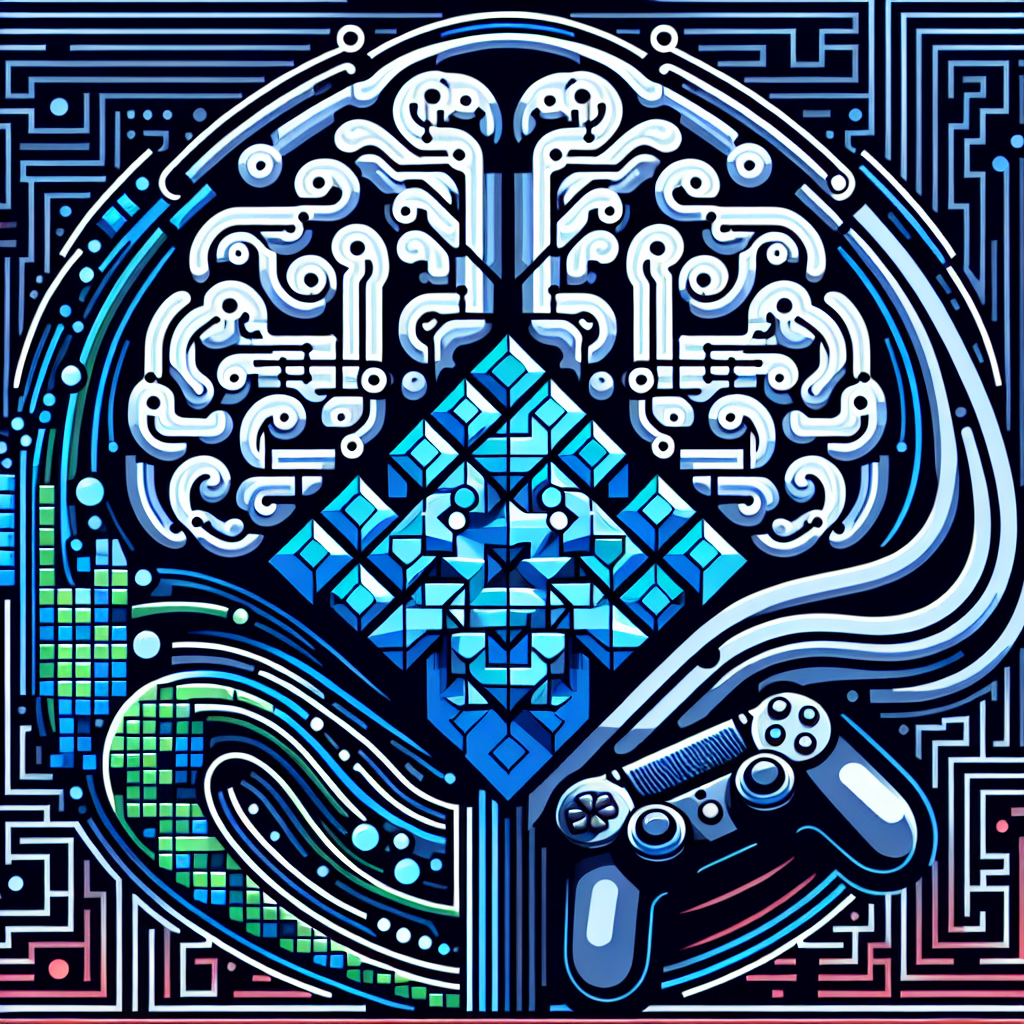Artificial Intelligence (AI) and Procedural Content Generation (PCG) have become increasingly important in the world of game development. AI is the simulation of human intelligence processes by machines, while PCG is the creation of game content using algorithms rather than manual design. When combined, these technologies can create unique and dynamic gaming experiences that adapt to the player’s actions and preferences.
AI in Games
AI has been used in games for many years to create challenging opponents and enhance the overall gameplay experience. In traditional games, AI is often used to control non-player characters (NPCs) and make them behave in a realistic and intelligent manner. This can involve pathfinding, decision-making, and learning algorithms that allow NPCs to adapt to the player’s actions.
One of the most common uses of AI in games is in creating dynamic difficulty levels. By analyzing the player’s performance and adjusting the game’s difficulty accordingly, AI can provide a more engaging and satisfying experience. For example, if a player is struggling with a particular level, the AI can reduce the difficulty to help them progress, or increase it if they are finding the game too easy.
AI can also be used to create more realistic and immersive game worlds. By simulating complex behaviors and interactions between NPCs, AI can make the game world feel more alive and dynamic. This can include things like realistic crowd simulations, dynamic weather patterns, and lifelike animal behavior.
Procedural Content Generation in Games
Procedural Content Generation (PCG) is the process of creating game content using algorithms rather than manual design. This can include things like levels, maps, characters, and even entire game worlds. PCG allows developers to create vast and diverse game experiences without the need for hand-crafted content, making it a powerful tool for creating replayable and unique games.
One of the main advantages of PCG is its ability to create endless variation in game content. By using algorithms to generate content, developers can create an infinite number of levels, maps, and other game elements, ensuring that players never experience the same thing twice. This can greatly increase the replay value of a game and keep players engaged for longer periods of time.
PCG can also be used to create more immersive and believable game worlds. By generating realistic landscapes, buildings, and other environmental elements, developers can create worlds that feel alive and dynamic. This can include things like procedurally generated cities, forests, and dungeons that provide a sense of exploration and discovery for players.
Combining AI and PCG
When AI and PCG are combined, they can create truly unique and dynamic gaming experiences. By using AI to analyze the player’s actions and preferences, developers can create personalized game content that adapts to the player’s playstyle. This can include things like dynamically adjusting the difficulty level, generating new challenges based on the player’s performance, and creating personalized quests and missions.
AI can also be used to enhance the procedural generation process by creating more intelligent and responsive game content. For example, AI algorithms can be used to generate more realistic NPC behavior, dynamic enemy encounters, and adaptive game environments. This can create a more immersive and engaging experience for players, as the game world feels more alive and responsive to their actions.
FAQs
Q: How is AI used in procedural content generation in games?
A: AI can be used to analyze the player’s actions and preferences, generate personalized game content, and enhance the procedural generation process by creating more intelligent and responsive game elements.
Q: What are the benefits of combining AI and PCG in games?
A: By combining AI and PCG, developers can create unique and dynamic gaming experiences that adapt to the player’s actions and preferences, providing a more engaging and immersive gameplay experience.
Q: How can AI and PCG improve replay value in games?
A: By using AI to analyze the player’s performance and generate personalized content, developers can create endless variation in game content, increasing the replay value and keeping players engaged for longer periods of time.
In conclusion, AI and procedural content generation have the potential to revolutionize the gaming industry by creating more personalized, immersive, and dynamic gaming experiences. By combining these technologies, developers can create games that adapt to the player’s actions and preferences, providing a more engaging and satisfying experience. As technology continues to advance, we can expect to see even more innovative uses of AI and PCG in games, leading to truly unique and unforgettable gaming experiences for players around the world.

